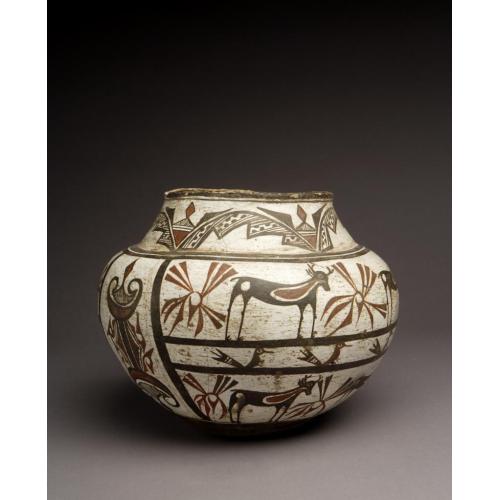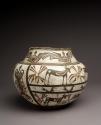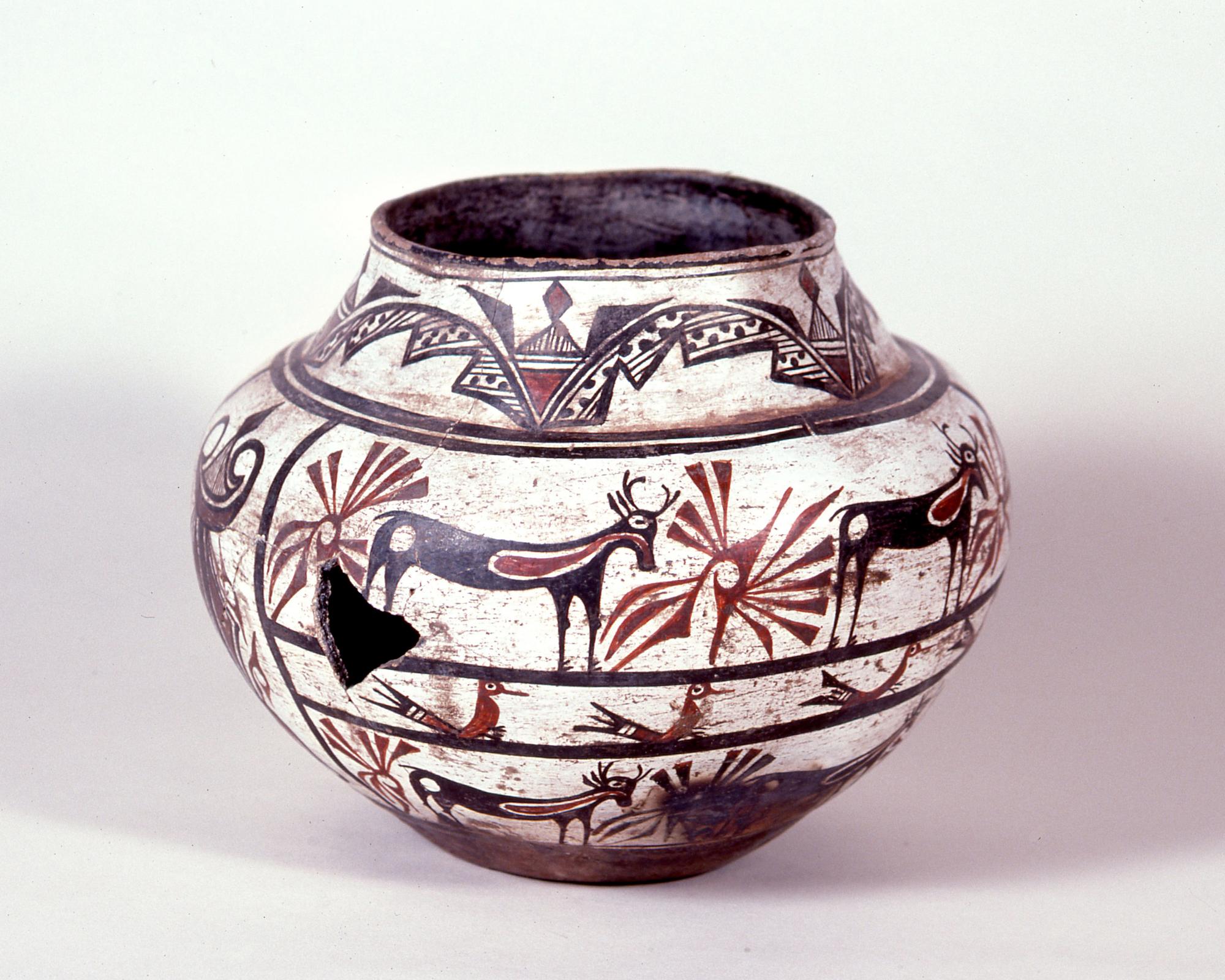
Photograph by Addison Doty. Copyright 2010 School for Advanced Research.
Water jar | K'yabokya de'ele
Date: 1850-1900
Artist or Maker: Unknown
Dimensions:
Dimensions: 25.4 × 30.5 cm (10 × 12 in.)
Weight: 2.5 kg (5.5 lb.)
Medium: clay | paints
Credit Line: Gift of Witter Bynner, 1924.
Place Made:
Zuni Pueblo, McKinley County, New Mexico, Southwest, United States, North America
Object Number: IAF.229
Not on view
Tribal Collection Review RemarksOctavius Seowtewa during collection review visit Nov. 16 and 17, 2009 (Events Record “Collection Review: Zuni Tribe, Review 3”): The red bird-like designs between the deer (not the birds in the band below them) are based on the head one of the rainbird designs, without the body. The other extensions radiating from the rainbird’s heads are decorative elements, perhaps abstract representations of feathers. Similar rainbird head designs are present on SAR.1978-1-144 and it is possible they may be by the same artist or family.
As per Octavius Seowtewa during collection review visit Dec. 9 and 10, 2014 (Events Record “Collection Review: Zuni Tribe, Review 12”): The rim is black and has moderate wear. There is a thin black line with a line break immediately below the rim. The neck design is a continuous one that is not divided into compartments. It contains bird elements such as tails, feathers, crests, and wings, which are filled with rain line hatching and spots that may represent hail/seeds/planting holes. There is a thick double line with a line break between the neck and body designs. The body designs are divided into three horizontal bands (mirrored on either side of the jar) and two vertical compartments (also mirrored on either side of the jar). In the horizontal sections, the upper and lower bands each contain two black deer with red heartlines and three stylized red birds with elaborate crests and feathers. The middle band contains four black and red birds, each with slightly different tails and poses. The vertical compartments contain bird elements including heads, crests, wings, tails, and rain line hatching. There is a thin line with a line break between the body and the base. The base is solid dark brown with some fire clouds and shows moderate wear. It has a concavity for carrying the jar on the head. The jar has many large cracks in it, some of which have been repaired.
The word for a water jar in Zuni is “k'yabokya de'ele,” which translates to “water container vessel” in English. The intended use for these jars was to store and carry water, but they could also be used to store other items.
In Collection(s)
The Indian Arts Research Center, in collaboration with Native American community scholars, strives to present accurate collections records. Records may be updated as new information becomes available and is reviewed with the Native American community having cultural affinity to particular items. Please write to iarc@sarsf.org if you have questions or concerns related to the documentation.


